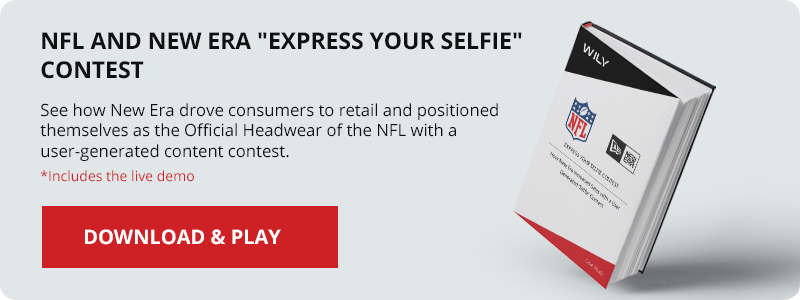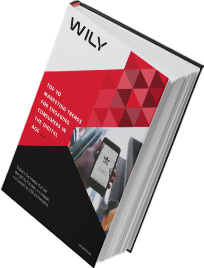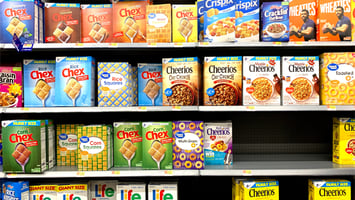When you think of dogs (given you aren’t afraid of them), what comes to mind? Trust, loyalty,...
How the Selfie Transformed B2C Marketing Forever
 As of 2017, 87% of U.S. adults aged 18 to 34 years have taken a photograph of themselves and uploaded it to a social media website. That’s a pretty staggering statistic, and shows how impactful smartphones and social media have become. In fact, reports reveal that approximately one million selfies are taken each day, and growing year over year. The selfie has quickly become a cultural phenomenon. But how are brands leveraging our “selfie” obsession and turning it into a marketing strategy? We recently covered how brands are launching effective user-generated content campaigns, but let’s go a step further and discuss how the selfie itself is defining a new era of B2C marketing strategy, and how brands are taking advantage of it.
As of 2017, 87% of U.S. adults aged 18 to 34 years have taken a photograph of themselves and uploaded it to a social media website. That’s a pretty staggering statistic, and shows how impactful smartphones and social media have become. In fact, reports reveal that approximately one million selfies are taken each day, and growing year over year. The selfie has quickly become a cultural phenomenon. But how are brands leveraging our “selfie” obsession and turning it into a marketing strategy? We recently covered how brands are launching effective user-generated content campaigns, but let’s go a step further and discuss how the selfie itself is defining a new era of B2C marketing strategy, and how brands are taking advantage of it.
The Truth Factor
In the old days of advertising and marketing, brands had to convince consumers that buying their product meant they could be like the people in their advertisements. Pretty, important, successful; consumers purchased products based on what they envisioned their life as. But as the Internet took over, consumers were not as easily fooled. Access to online review sites such as Yelp, and the emergence of the online blogger, meant that consumers could simply go online and call out brands for selling them crummy products. Companies can no longer escape this new reality, as consumers no longer buy into their false myths as easily. So, rather than brands trying to defend their negative reviews, they instead needed to create more positive ones. How you may ask? Well, the “selfie” revolution gave way to a new kind of marketing; influencer marketing.
The Influencer Effect
The selfie created a culture of influencers, or “real people”, advertising on behalf of brands. Product reviews coming from a close friend or family member are much more valuable than any promotional advertisement. Therefore, seeing an individual you feel you know and trust can ultimately influence your buying decisions much more easily. For instance, if you follow a fashion blogger online, and they share a photo of themselves wearing a new pair of shoes, this content feels more authentic to the consumer. Now, take the same pair of shoes, and picture them in a mobile advertisement; you’ll likely scroll right past it. Today’s consumers yearn for “influencer” recommendations instead of getting duped into poor purchasing decisions.
FabFitFun is one brand that comes to mind for its influential “selfie” marketing strategy. They started picking up steam when they decided to gift their boxes to “insta-famous” reality show contestants, such as former guests of the “The Bachelor”. This was a smart strategy because these influencers put their lives on display, and their followers feel strongly connected with them. When these influencers started sharing their “unboxing” videos, consumers flocked to get their hands on a FabFitFun box. But this strategy goes beyond reality show contestants. For example, if you head over to the “The Everygirl” blog you’ll see a promotional post for the Summer 2018 FitFabFun box (pictured below). Even the blogger’s name makes you feel like she’s relatable. She could be a friend, a family member, or someone just like you. The shots of her holding up the products provide a warm and inviting feeling. By showing her face alongside these products, we feel connected on a level that a traditional ad lacks.
Seeing Your “Selfie” in a Brand
Today, personalization is key for many consumers. Consumers are smarter and more cautious than ever before with their purchase decisions. Thus, brands must take a much more strategic approach to marketing their products, and the selfie revolution has forced marketers to look outwards, instead of in.
These posts by Starbucks and Rimmel London show how brands are taking advantage of “selfie” culture to appeal to audiences. We see two women, both beautiful, but slightly more relatable than a runway model, with products in their hands. The first thing to note is the pictures appear underproduced, although they are likely highly produced. And secondly, they appear to be captured in real-time, although they are likely taken in advance. However, these images portray a more authentic and trustworthy brand, as if someone you know has recommended the product.
This influencer-created content has changed the direction of marketing, putting it in the hands of the consumer, rather than the brand. The trick is to understand your audience, and your buyer personas, prior to participating in influencer-driven marketing. Additionally, using your own social accounts to promote the content that best describes your brand is one way to control the brand message.
Big Brands Go into Selfie Mode
Even Fortune 500 organizations are jumping on the “selfie” bandwagon. Recently, McDonald’s unveiled the “Frylus” so you can “finally take selfies with sticky hands.” This campaign comes hot on the heels of #NationalSelfieDay, in a hilarious attempt to capture a millennial audience. The YouTube commercial stars Instagram personality, Kirby Jenner, having an existential crisis about how to take a selfie while eating a quarter pounder. The solution – offered by McDonald’s – is of course the “Frylus”, which looks to be a fry-looking pen you can use to take a selfie with your phone. Customers can get their hands on a “Frylus” when they purchase a beef quarter pounder on #NationalSelfieDay. This marketing strategy would have fallen on deaf ears 6 years ago, but today, this campaign will surely appeal to a wide audience.
The key here is that they did not have a A-list celebrity to promote this event. Instead they’ve requested the help of an Instagram personality best known for his mockery of the Jenner sisters, and their “selfie-driven” fame. It’s smart, it’s humourous, and it makes McDonald’s look like they get “you”, the millennial audience. Frankly, it makes us want to go out and get a beef quarter pounder and take a selfie of ourselves with one.
More importantly, how has the selfie transformed your marketing agenda? Have you integrated a campaign and taken advantage of the influencer, insta-famous generation yet? How long will this strategy last before consumers get tired of it too?
White Paper: 2018 Consumer Engagement Trends Report
In this age of digital transformation, businesses need to take creative risks when it comes to their engagement strategy. Explore the top 10 marketing trends that are disrupting the way we engage consumers in 2018 and beyond.
WHAT’S INSIDE:
- Personalizing the Experience with Artificial Intelligence
- Getting Immersive with Virtual Reality & Augmented Reality
- Winning Over Your Customer with Contests and Sweepstakes
- Interactive Case Studies from Dr. Oetker and adidas
- Plus So Much More!





